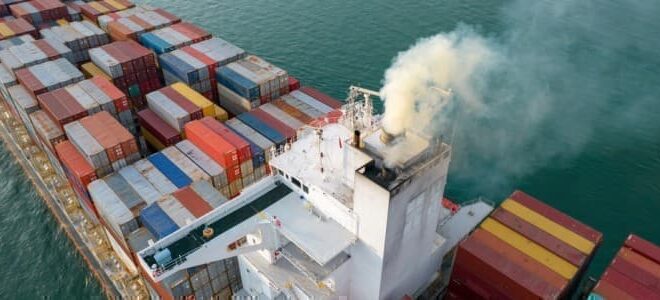The shipping industry is one of the focal points of the energy transition, given the amount of hydrocarbon fuels it uses.
Increasingly stringent rules about emissions from that industry have been one tool for pushing it into a transition direction.
Another should have been the regular process of scrapping old vessels and their replacement with new ones that use lower-carbon fuels. Only this is not happening.
The Financial Times reported recently that the average age of container ships has gone up to 14.3 years, which is the highest since 1993. In tankers, things are even worse from the transition perspective. The average age of tankers was 12.9 years in 2023, which is the highest since 2003.
Per shipping industry sources the FT spoke to, there appear to be two reasons for this rising age when it should be falling. Reason number one is sanction avoidance by shippers carrying Russian oil.
Dubbed “a shadow fleet,” these tankers are often old ones that would normally have been scrapped and replaced. Instead, they are being used actively.
The shadow fleet is also being used to ship other sanctioned oil from Iran and Venezuela, but it really caught everyone’s attention when the G7 tried to simultaneously stifle Russian oil trade and keep the world well supplied with crude by imposing a price cap for Russian oil.
Attempts are being made to rein in the fleet of old tankers that have a higher risk of an environmental accident due to their age, the latest among them from the European Union.
The European Commission proposed in November last year that the bloc ban sales of old tankers to Russia in a bid to curb its international trade on old tankers. The EC proposal also stipulated that contracts for tanker sales to third parties included clauses that the vessels could not be resold to Russia unless they would carry oil sold below the G7 price cap.
While the EU devises increasingly eccentric measures to enforce sanctions against Russia, shipowners are cashing in on the strong demand for tankers, regardless of their age.
The price for a 15-year-old Aframax tanker has surged by 129% since February 2022, according to data from shipbroker Gibson cited by the FT. Such an Aframax currently costs $40 million. Sending it to the scrapyard, on the other hand, would only generate some $9.2 million on average.
As a result, shipowners “aren’t scrapping because there’s so much money to be made,” according to a Gibson research director who spoke to the FT. But it’s not just the money to be made from using and trading old tankers. There is also unease about low-carbon fuels and their availability.
Several alternatives to hydrocarbon fuels are being considered at the moment, including ammonia, methanol, and hydrogen. Large shippers are ordering new vessels operating with these new fuels, but they are still a very small minority of the global fleet.
Maersk Tankers, for instance, recently ordered ten very large ammonia carriers from Hyundai, but reports on the news noted that it has yet to design the vessels to run on that new fuel. Yet the deal is not final since the company said in its news release that “a decision to install ammonia capable engines requires both regulatory and customer support.”
Methanol, another alternative to hydrocarbons, is also making inroads into the shipping industry. Shipping major COSCO, for example, recently sealed a deal for three Aframax tankers that would have dual-fuel system—featuring methanol as one of the fuels. Another three tankers on order by the Chinese company would be methanol-ready, meaning they could be converted to methanol at some point in the future.
All this suggests a certain readiness among the largest players in the shipping industry to do their bit for the transition, but the industry as a whole is not exactly bursting with enthusiasm. And it has a very good reason for this.
A few years ago, the International Maritime Organization promoted LNG as an alternative to fuel oil to reduce sulfur emissions. Yet LNG has since come into the sights of transition advocates who argue it should not be considered a bridge fuel and its use should be discouraged. With a new focus on methane from regulators in certain jurisdictions, LNG will remain the focus of attention, heightening uncertainty for shippers.
There is also the cost of retrofitting existing tankers for a greener era. According to a Maritime Executive report from September last year, converting an existing tanker or other vessel to ammonia or methanol would cost between $5 million and $15 million. The report notes that retrofitting older vessels makes no sense as they are likely to reach the end of their lives before the investment pays off.
On top of it all, shipbuilding capacity has dropped over the past 13 years—and by a substantial 35%—per Gibson data cited in the FT report. Even if all shipowners decided to go green, the actual process would take decades because of this reduced shipbuilding capacity following a consolidation wave in the past decade.

 Iran Energy News Oil, Gas, Petrochemical and Energy Field Specialized Channel
Iran Energy News Oil, Gas, Petrochemical and Energy Field Specialized Channel



